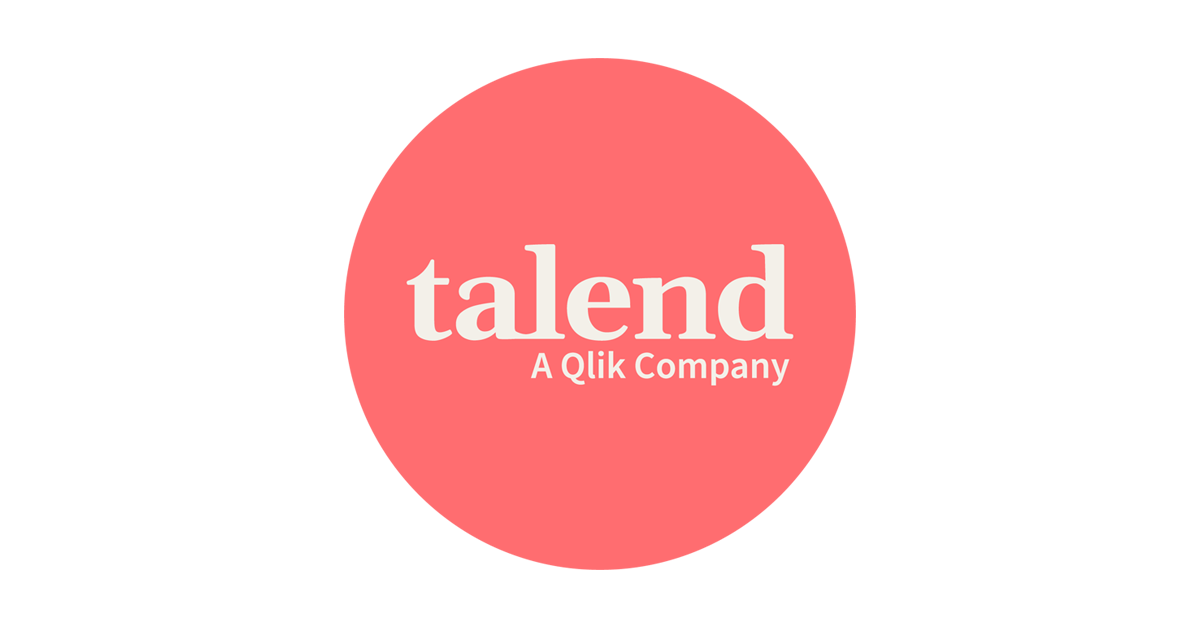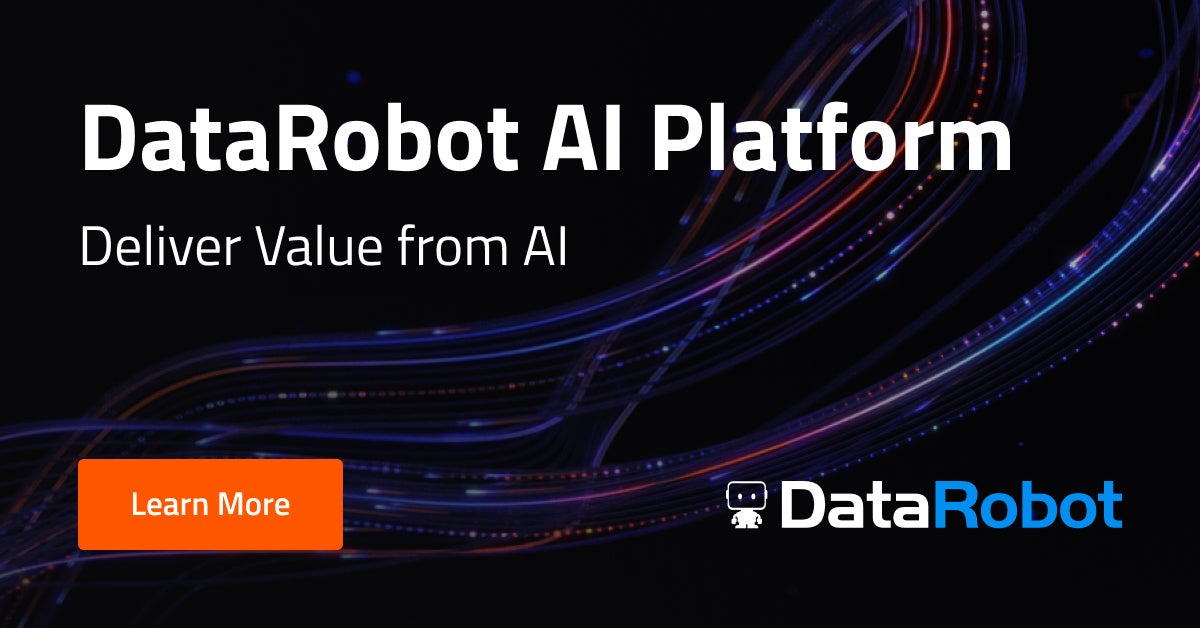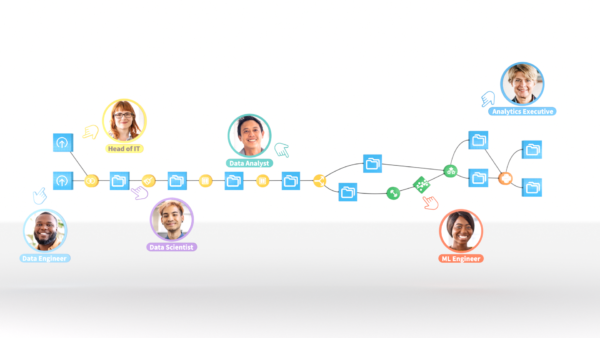Introduction
As data volumes and the need for insights continues to grow exponentially, enterprises require robust and scalable data warehouse platforms to help make sense of it all. In this post, we evaluate the top 15 data warehouse software options based on their capabilities to transform raw data into actionable business intelligence. We look at features for data preparation, analytics, visualization, self-service interfaces and more.
Methods of Evaluation
To evaluate and rank the top platforms, we considered various factors including features and functionality, customer reviews and ratings, pricing options, deployment flexibility, integration capabilities, support for advanced analytics and AI, number of active deployments, and metrics like website traffic and backlink profiles. This gives a holistic view of what solutions are most comprehensive as well as gaining popularity and mindshare in the market.
1. IBM Db2 Warehouse
IBM Db2 Warehouse is a scalable data warehouse software platform developed by IBM. It is optimized for hybrid cloud and on-premises deployments allowing organizations to leverage their existing IT investments. Db2 Warehouse offers the ability to consolidate diverse datasets from sources like databases, data lakes, and applications in a single platform for advanced analytics and business intelligence.
Pros: Some of the key advantages of IBM Db2 Warehouse include:
– Strong support for hybrid and on-premises deployments allowing existing IT investments to be leveraged.
– Integrates well with IBM Cloud and AI services for advanced analytics use cases.
– Provides advanced analytics capabilities for SQL, machine learning, and Apache Spark/Hadoop workloads.
– Supports both SQL and Hadoop interfaces for analytics flexibility.
– Automatically scales infrastructure and performs maintenance tasks with no downtime.
Cons: One potential disadvantage is that IBM Db2 Warehouse is targeted more for large enterprise customers given its scale and pricing. It may not be suited for some smaller businesses or startup analytics needs.
Pricing: Pricing for IBM Db2 Warehouse varies based on infrastructure requirements, data volumes, and support plans. It is generally priced on a per-TB per month model but IBM also offers subscription and enterprise agreements for large deployments.
Some key stats about IBM Db2 Warehouse include:
– Supports petabytes of data with capabilities to scale elastically on-premises or on IBM Cloud.
– Has over 30 years of continuous innovation with thousands of enterprise customers globally.
– Integrates natively with IBM Watson, IBM Cloud Pak for Data, and IBM Cloud offerings.
– Automates tedious data warehouse tasks like maintenance, backups, and scaling through its Autonomous capabilities.
2. SAP HANA
SAP HANA is an in-memory, column-oriented, relational database management system developed and marketed by SAP SE. As a database platform, it is used for operational and analytical processing of transactional and analytical data. Some of its key capabilities include real-time analytics, fast data loading, and hybrid data management across on-premises and cloud deployments.
Pros: Some key advantages of SAP HANA include: in-memory speed for analytical queries, intuitive modeling and visualization tools, data management and advanced analytics capabilities in a single system, and support for hybrid and multi-cloud deployments.
Cons: A potential disadvantage is the high upfront license costs associated with SAP HANA compared to other database options.
Pricing: SAP HANA pricing is based on the size and type of deployment (on-premises vs cloud), number of users, and additional capabilities/applications required. Licensing and support costs can vary widely depending on specific requirements.
Some key stats about SAP HANA include: it can process queries and analytics over petabytes of data in seconds; over 12,800 customers have chosen SAP HANA; it supports over 50 billion rows and 25 trillion cells of data in memory; and it handles over 750TB of data in memory for huge enterprise deployments.
3. Tableau
Tableau is a business intelligence and analytics software developed by Tableau Software. It helps users see and understand data through easy-to-use visualizations. Tableau can connect to over 100 different types of databases and data sources to provide a unified view of data.
Pros: Some of the main advantages of Tableau include:
– Intuitive visualizations that are easy for business users to understand without technical expertise.
– Ability to connect to various data sources in a single interface for a unified view.
– Strong collaboration features and ability to share visualizations across an organization.
– Can scale from small deployments to very large enterprise implementations supporting thousands of users.
Cons: One potential disadvantage is the learning curve for more advanced visualization techniques and features. While Tableau has an intuitive drag-and-drop interface, leveraging all of its advanced capabilities still requires some training and practice.
Pricing: Tableau offers several pricing options including desktop/server subscriptions. Pricing starts at $999/user/year for Tableau Desktop and $2,500/user/year for Tableau Server. Volume licensing discounts are available for larger deployments. There are also cloud offerings on Tableau Online and Tableau Server on AWS/Azure at competitive monthly rates.
Some key stats about Tableau include:
– Used by over 86,000 companies worldwide including Intel, Home Depot, Uber, CVS Health, etc.
– Supports over 100 different data sources for connecting to both on-premises and cloud data.
– Has over 3 million active users creating insights with visualizations and dashboards.
4. Dassault Systemes Clarify
Dassault Systemes Clarify is a data warehouse software developed by Dassault Systemes, a French multinational technology company. Clarify offers a variety of tools and capabilities for data integration, preparation, modeling, analysis and accessibility.
Pros: Some key advantages of Dassault Systemes Clarify include: Self-service interfaces for business users to access and work with data without relying on IT. Automatic real-time and batch processing of data. Machine learning built-in for predictive insights and automating data preparation tasks. Flexible deployment on-premises or in the cloud.
Cons: A potential disadvantage is the premium pricing of Clarify compared to some open-source data warehousing options. It may not be suitable for very small businesses or startup companies with limited budgets.
Pricing: Clarify pricing is not publically disclosed and varies based on deployment size, platform, modules and support selected. It typically requires an enterprise licensing agreement. Potential customers will need to request a custom quote from Dassault Systemes sales representatives for accurate pricing information.
Some key stats about Dassault Systemes Clarify include: It processes over 2.5 billion transactions per day for large enterprise customers. Clarify supports petabytes of data and hundreds of concurrent users. Over 500 customers globally use Clarify across various industries like manufacturing, retail, healthcare and more.
5. Qlik Sense
Qlik Sense is a data visualization and data discovery software developed by Qlik. Qlik Sense allows users to explore data visually and discover insights in their data. It offers an associative data model that lets users freely navigate relationships within the data.
Pros: Some key advantages of Qlik Sense include:
– Associative data model for exploration: Allows users to explore data freely without being constrained by filters or queries
– Embedded analytics and dashboards: Dashboards and analytics can be directly embedded into various applications
– Visual storytelling: Capabilities for datastorytelling through visualizations and narratives
Cons: One potential disadvantage of Qlik Sense could be its steep learning curve for power users to fully leverage its data modeling and analytics capabilities. It may require training for advanced use.
Pricing: Qlik Sense pricing varies based on number of users, server cores, and deployment (on-premises vs cloud). It offers monthly and annual subscription options starting at around $30 per user per month for the cloud version.
Some key stats about Qlik Sense include:
– Used by over 38,000 customers globally across various industries
– Offers a native cloud SaaS option in addition to on-premises deployment
– Over 250 out of box applications and templates for common use cases
6. Talend
Talend is a leading platform for data integration and management. As an open source software, it provides functionalities for data ingestion, integration, quality, governance and sharing. Over the last decade, Talend has established itself as one of the most popular names in the data warehousing and integration space.
Pros: Some key advantages of Talend include:
– Unified data pipeline design for various data sources
– Built-in functionality for ETL, data quality, data governance and API services
– Supports both on-premise and cloud deployments seamlessly
– Open source Apache license provides flexibility and cost savings
Cons: One potential disadvantage is that the free community edition limits dataset size and number of concurrent processes. For very large and complex data scenarios, the paid enterprise tier may be required.
Pricing: Talend pricing consists of the following tiers:
– Community Edition (Free for open source use)
– Standard Edition (Starting at $3500/month per server)
– Professional Services (Custom consulting and implementation packages)
– Cloud Pricing starts at $1/GB per month for data flow volumes
Some key stats about Talend include:
– Used by over 90% of Fortune 500 companies
– Supports more than 450 different data formats and systems out of the box
– Integrates with all major cloud platforms including AWS, Azure, and GCP
– Has a global community of over 1 million users
7. Hitachi Vantara Pentaho
Hitachi Vantara Pentaho is an open source data integration and analytics solution from Hitachi Vantara. Pentaho provides capabilities in data warehousing, business analytics and data integration to help organizations drive meaningful insights from their data.
Pros: Some key advantages of Pentaho include:
– ETL/ETL automation and workflows for streamlining data integration tasks
– Self-service analytics and BI capabilities for business users to access and work with data independently
– Ability to connect to various databases, big data sources, cloud platforms and applications to integrate diverse systems
Cons: Limited out of box machine learning and advanced analytics capabilities compared to some proprietary solutions
Pricing: Pentaho pricing starts from free open source community edition and goes up to premium support subscriptions based on deployment size and requirements. SaaS and on-premise deployment options are available.
Some key stats about Pentaho include:
– Used by over 1000+ customers globally across various industries
– Over 20 years of experience in data integration and analytics
– Supports 300+ data sources and targets for integration
8. Domo Data Warehouse
Domo Data Warehouse is a unified data experience platform that provides self-service analytics, embedded insights, and governed data exploration capabilities. Founded in 2010 and headquartered in American Fork, Utah, Domo serves over 3,000 customers worldwide including large enterprises and fast growing organizations. Its platform is focused on delivering business insights by connecting to any cloud or on-premises data sources and then analyzing and visualizing the aggregated data through low code/no code data experiences.
Pros: Some key advantages of the Domo Data Warehouse platform include:
– Unified platform for BI, analytics, and data apps with low/no code capabilities
– Embed insights directly into business applications through APIs and web components
– Integrate any data sources without moving data using governed data marts
– Self-service analytics and data exploration for business users through interactive experiences
Cons: One potential disadvantage is the monthly cloud subscription licensing model may be more expensive than one-time perpetual licenses for some larger on-premises deployments.
Pricing: Domo Data Warehouse pricing is based on a monthly subscription model starting at $1500/month for the Standard plan which includes access to 5 users and up to 50GB of query and storage capacity. Additional capacity, users, and premium features are available in higher-tiered plans.
Some key stats about Domo Data Warehouse include:
– Used by over 3,000 customers globally across industries
– Integrates over 250 pre-built connectors for cloud and on-premises applications and databases
– Pay only for what you use with monthly cloud subscription licensing
– Grew revenue by over 30% in 2022 fiscal year
9. Teradata Vantage
Teradata Vantage is an integrated data warehousing and analytics platform from Teradata. As one of the earliest data warehousing solutions, Teradata has decades of experience in working with some of the largest enterprises to help them gain insights from their data. Vantage allows organizations to manage data across on-premises, private and public clouds to power analytics, data science and AI initiatives.
Pros: Key advantages of Teradata Vantage include:
– Strong support for hybrid and multicloud deployments with opportunities for on-premises, private and public clouds
– Proven performance for SQL queries and analytics workflows on large datasets
– Full featured platform for both data warehousing and advanced analytics use cases
– Robust data governance, security and reliability features for enterprise-grade deployments
Cons: One potential disadvantage is that as an older player in the market, the UI and some features may not be as modern or easy-to-use compared to newer data warehousing solutions.
Pricing: Teradata Vantage is licensed based on the volume of data stored and processed. Pricing may vary based on geography, node configuration, support plans and professional services required for deployment and integration. Contact Teradata sales for a custom quote.
Some key stats about Teradata Vantage include:
– Supports over 175 PB of data
– Can process over 100 trillion rows per day
– Over 4000 customers globally including top financial institutions, retailers, telcos and more
10. DataRobot Data Warehouse
DataRobot Data Warehouse is an end-to-end machine learning platform developed by DataRobot that provides automated data preparation, machine learning model development and deployment capabilities. It offers both cloud and on-premises deployment options allowing businesses to leverage AI no matter where their data resides.
Pros: Some key advantages of DataRobot Data Warehouse include:
– End-to-end machine learning platform that handles everything from data to deploying predictive models
– Automated data preparation and selection reduces time spent on ETL and feature engineering
– Flexible deployment options allowing AI to be deployed either on-premises or in the cloud
– Intuitive UI enables business users to build and deploy models without needing to write code
Cons: One potential disadvantage is the vendor lock-in that could result from using a single vendor’s end-to-end platform. Customers may find it difficult to move models/workflows developed in DataRobot to other platforms.
Pricing: DataRobot Data Warehouse pricing is based on yearly subscriptions that scale based on the amount of data ingested, number of models/projects and level of support required. Pricing starts at $25,000/year for smaller deployments and goes up from there for enterprise customers.
Some key stats about DataRobot Data Warehouse include:
– Used by over 50,000 businesses worldwide
– Supports over 25 machine learning algorithms including decision trees, random forest, deep learning and more
– Automates over 70% of the machine learning workflow through automated data preparation and model selection
11. Pivotal Greenplum
Pivotal Greenplum is an advanced data warehouse platform developed by Pivotal Software. As an open source massively parallel processing (MPP) database, Greenplum provides excellent performance for complex analytic workloads and large datasets.
Pros: Key advantages of Pivotal Greenplum include:
– Massively parallel processing for scaling to big data workloads
– SQL interface that is familiar to analysts and data scientists
– Tight integration with other Pivotal data platforms like Pivotal Cloud Foundry for streamlined data pipelines
Cons: One potential disadvantage of Pivotal Greenplum is that the parallel programming model required for optimization can have a steep learning curve compared to traditional data warehouses.
Pricing: Pivotal Greenplum pricing varies based on project requirements but is typically available through an annual software subscription plan starting around $50,000 per year.
Some key stats about Pivotal Greenplum include:
– Can handle petabytes of data and thousands of concurrent queries
– Linear, massively parallel processing scales performance and capacity linearly as more servers are added
– Built-in analytics and machine learning capabilities through integration with Pivotal’s data science platform
12. DataStax Enterprise
DataStax Enterprise is a distributed data platform developed by DataStax to power real-time applications at scale on any cloud. It allows enterprises to modernize applications with Apache Cassandra, Apache Spark and Elastic capabilities that power top applications in the world. With DataStax Enterprise, enterprises can unify multi-model data access across both NoSQL and SQL to enable new experiences and insights.
Pros: ‘Powerful NoSQL and SQL analytics capabilities’, ‘Linear scalability both horizontally and vertically’, ‘Seamless integration with Apache Spark and Cassandra’, ‘Automated security, upgrades and backups’
Cons: One potential disadvantage is that as an enterprise-grade database, DataStax Enterprise comes with a higher cost compared to open source alternatives like Apache Cassandra.
Pricing: DataStax Enterprise is available in different editions. The pricing varies based on the edition, storage requirements, number of nodes, support plans etc. and has to be discussed with a sales representative for an accurate quote.
Some key stats about DataStax Enterprise include: Powers over 500 of the Fortune 1000 companies, Handles over 10 trillion requests per day globally, Over 15 years of expertise in distributed systems and database technologies.
13. Sisense Data Warehouse
Sisense Data Warehouse is a unified BI and analytics platform that enables users to build intelligent analytics into their products. The platform allows users to convert data into revenue by embedding AI-powered analytics with professional code, low-code, and no-code capabilities.
Pros: Some key advantages of Sisense Data Warehouse include: Unified platform for BI, analytics and data infrastructure. Embed analytics capabilities directly into applications and dashboards. Flexible cloud or self-hosted deployment models. Integrate and visualize data from a wide variety of sources. Pay monthly only for the resources consumed with no minimum commitments.
Cons: One potential disadvantage is that the platform requires integration into various data sources which can be time-consuming to set up depending on the complexity of the data environment.
Pricing: Sisense Data Warehouse pricing starts at $100 per month for 1 GB of data storage and 1 concurrent user. Additional pricing tiers are available depending on storage needs, concurrent users and additional analytics capabilities required.
Some key stats about Sisense Data Warehouse include: Ability to integrate and visualize data from many different sources such as databases, data lakes, social media, IoT devices and more in a single platform. Flexible deployment options to use on-premise, in private or public clouds, or in a hybrid setup. Pay monthly for only the CPU/GPU resources and storage used with no minimum commitments or upfront costs required.
14. Looker Data Warehouse
Looker is an enterprise business intelligence (BI) and data application platform developed by Looker Data Sciences. Using Looker, users can connect multiple data sources, discover and analyze data, and share reports and dashboards easily. Founded in 2012 and based in Santa Cruz, California, Looker helps thousands of customers unlock the value in their data and power their analytics solutions.
Pros: Key advantages of Looker include:
– Embedded analytics that let you build BI functionality directly into web and mobile applications.
– Easy to connect to multiple cloud data warehouses from different vendors in one place.
– Intuitive visual interface makes it simple for users to explore data and create reports/dashboards without coding.
– Flexible security model with role-based access to control who sees what data.
Cons: One potential disadvantage is that Looker is generally more costly than open source BI tools like Metabase or Power BI. However, for large enterprises with significant data and user needs, Looker may provide more value through its capabilities and support over the long run.
Pricing: Looker pricing consists of three main plans – Team, Business, and Enterprise. Pricing is based on a per-user per-month model with additional fees for features like support and hosting. For example, the Team plan starts at $150 per user per month and includes support, while the Enterprise plan is customized for the customer’s needs.
Some key stats about Looker include:
– Used by over 2000 companies globally including Starbucks, Sony, and Nielsen.
– Can connect to multiple data warehouses like Snowflake, Google BigQuery, Amazon Redshift, etc.
– Provides visual data modeling capabilities to easily query and analyze data.
– Role-based access controls to securely share insights across teams.
15. Dataiku
Dataiku is an end-to-end platform for data science and machine learning that allows users to manage data science workflows, deploy models, and collaborate on projects. Founded in 2013, Dataiku is headquartered in New York and has additional offices in Paris, London, Singapore, Sydney and other major cities around the world. With over 500 employees, Dataiku serves more than 500 enterprises globally across industries like banking, insurance, retail, manufacturing and more.
Pros: Key advantages of Dataiku include:
– Provides an end-to-end platform for the entire data science lifecycle from data ingestion to model deployment
– Integrated machine learning workflow management capabilities for tracking and reproducibility
– No-code/low-code interfaces that allow various roles to collaborate on projects
– Ability to support all major cloud and data platforms in a unified environment
Cons: A potential disadvantage is that as a fully-featured end-to-end platform, it may have a higher cost compared to best-of-breed point solutions for specific tasks like modeling or deployments.
Pricing: Dataiku offers various pricing plans including a free Community Edition as well as Enterprise pricing that scales based on the number of users, data volume, workloads and services.
Some key stats about Dataiku include:
– Over 500 enterprise customers worldwide
– Supports all major cloud platforms like AWS, Azure, GCP and on-premise deployments
– Has raised over $400M in total funding to date
Conclusion
Whether you need a fully-managed cloud data warehouse or an on-premise data lake, the platforms featured here provide powerful and flexible options. They all aim to simplify the process of aggregating, preparing and analyzing enterprise data to generate timely insights. Choosing the right solution will depend on your specific business and technical requirements. We hope this overview provides a useful starting point for selecting a data warehouse platform to power the next stage of your analytics journey.















